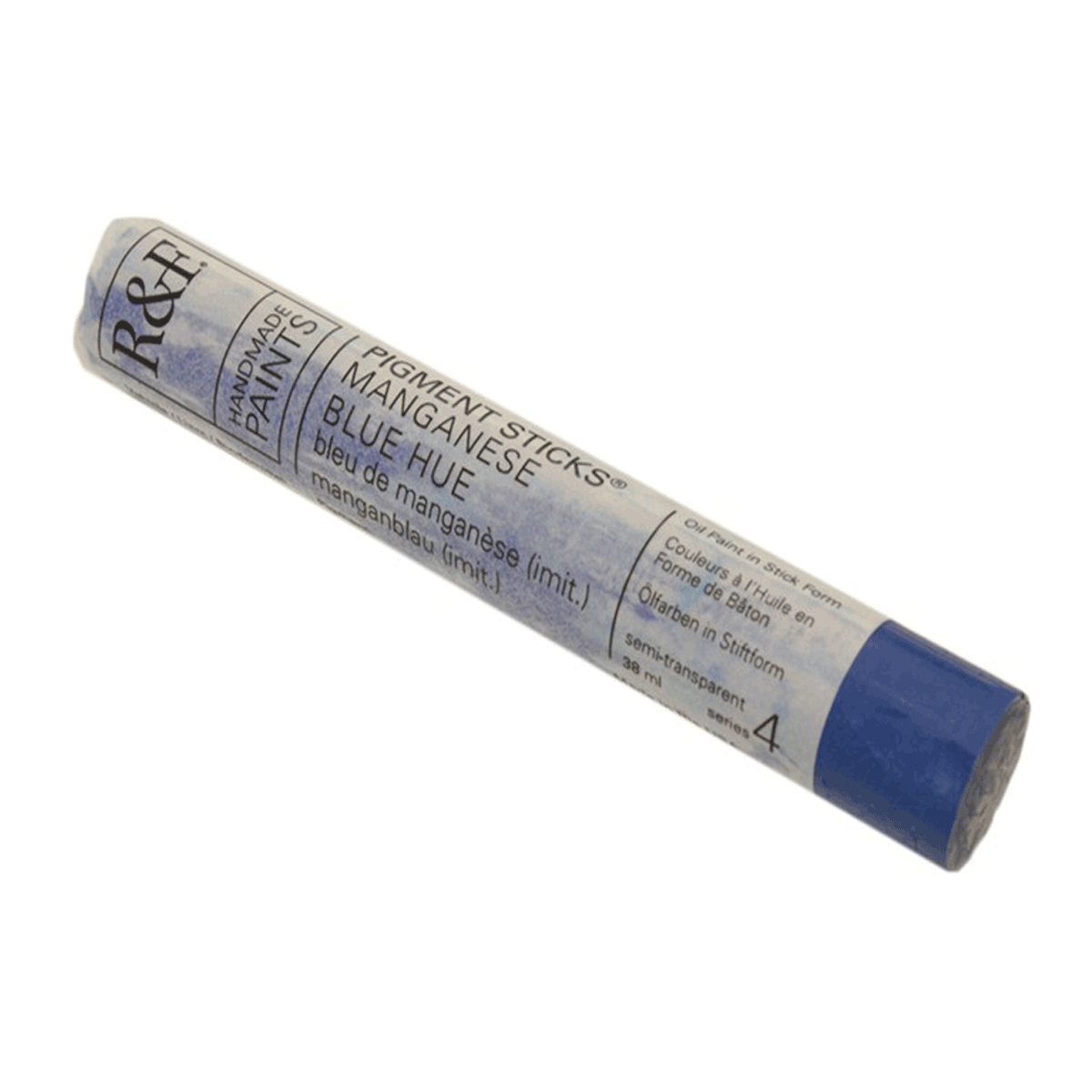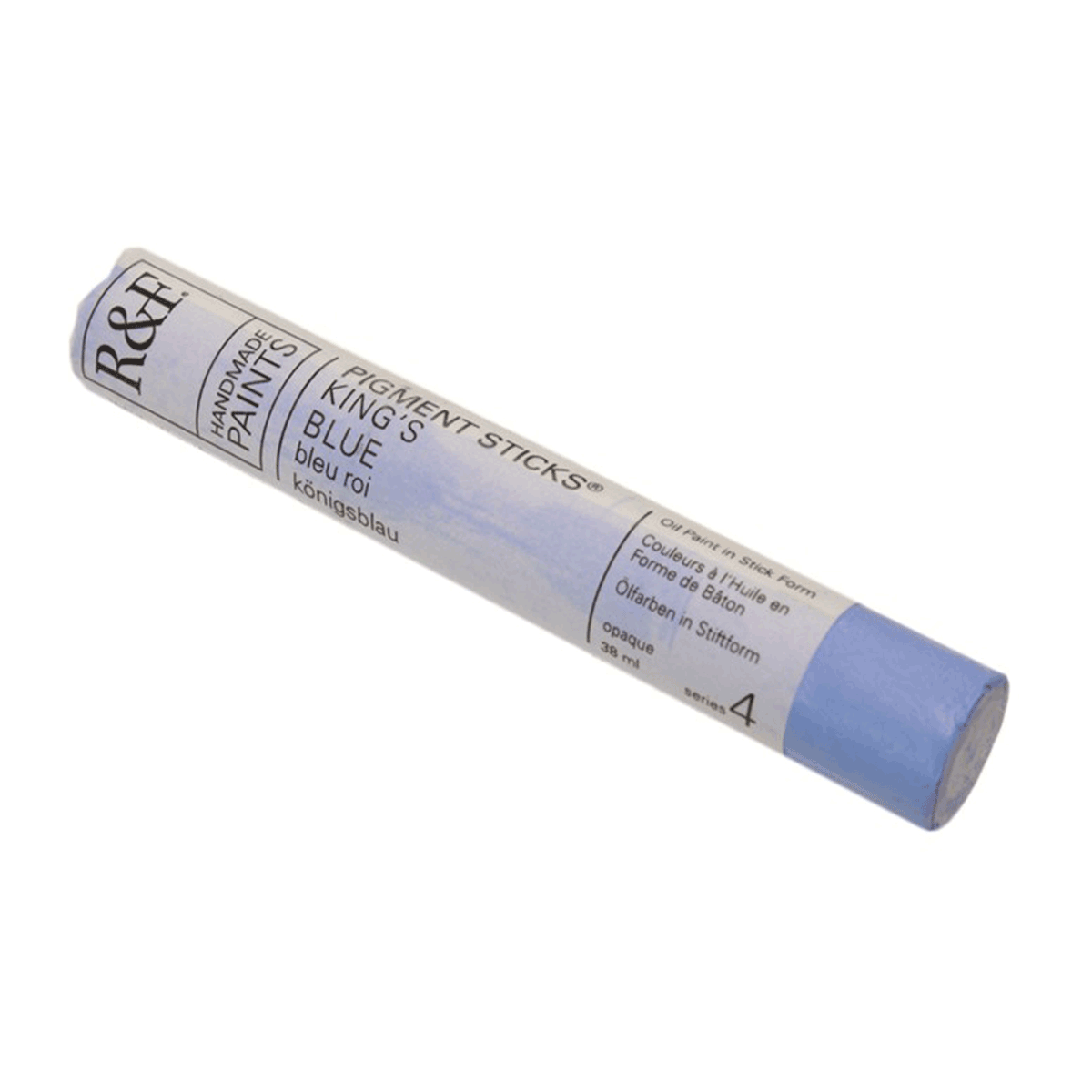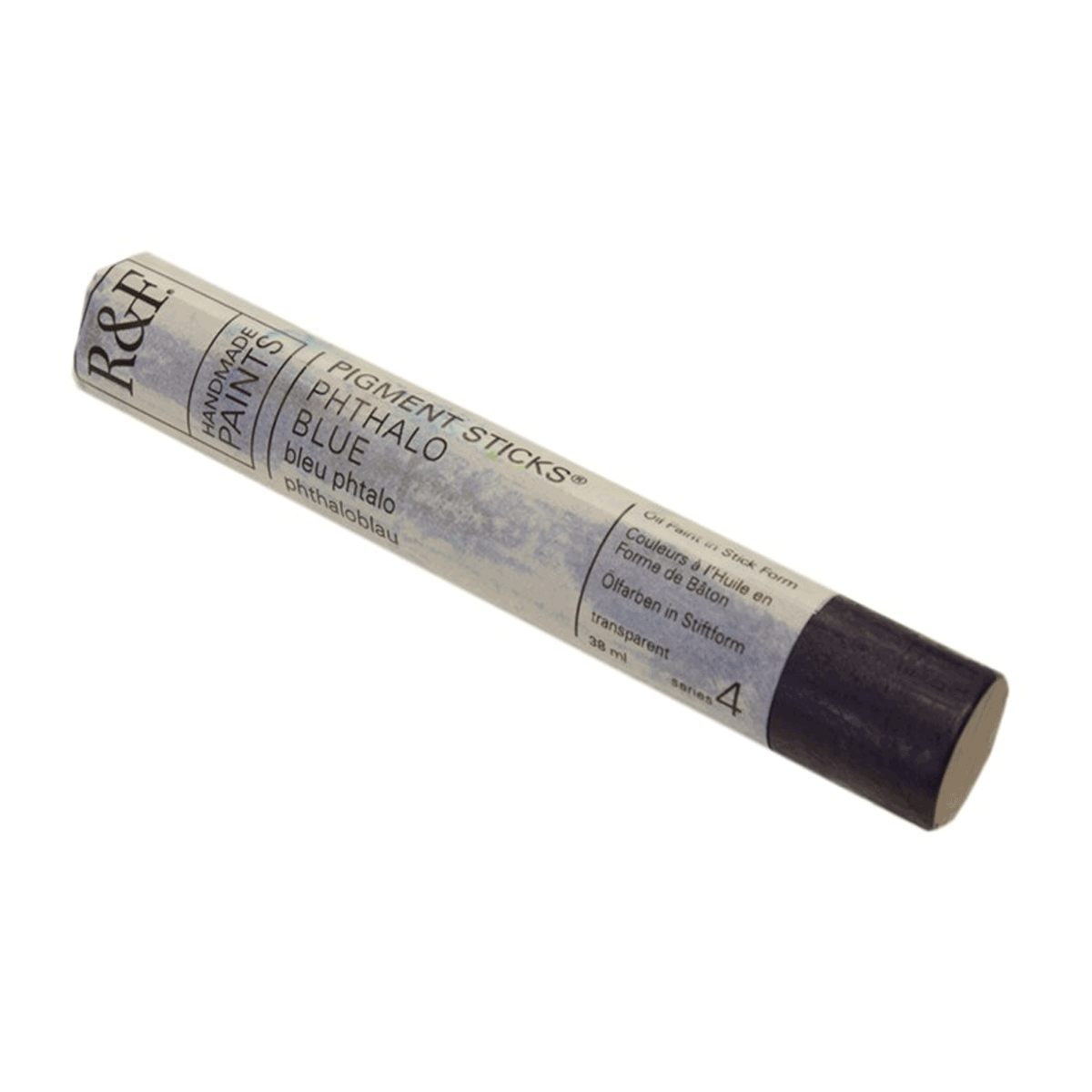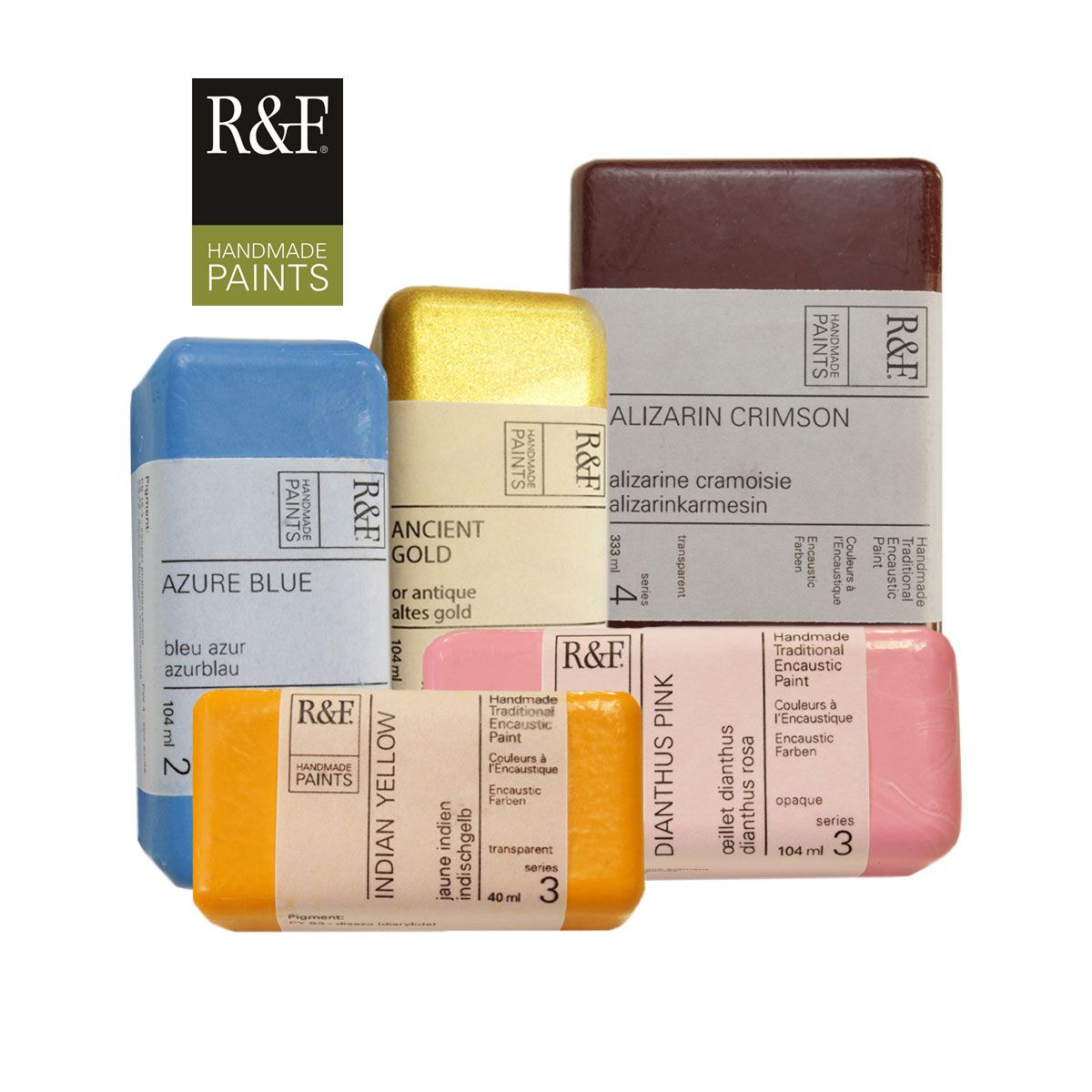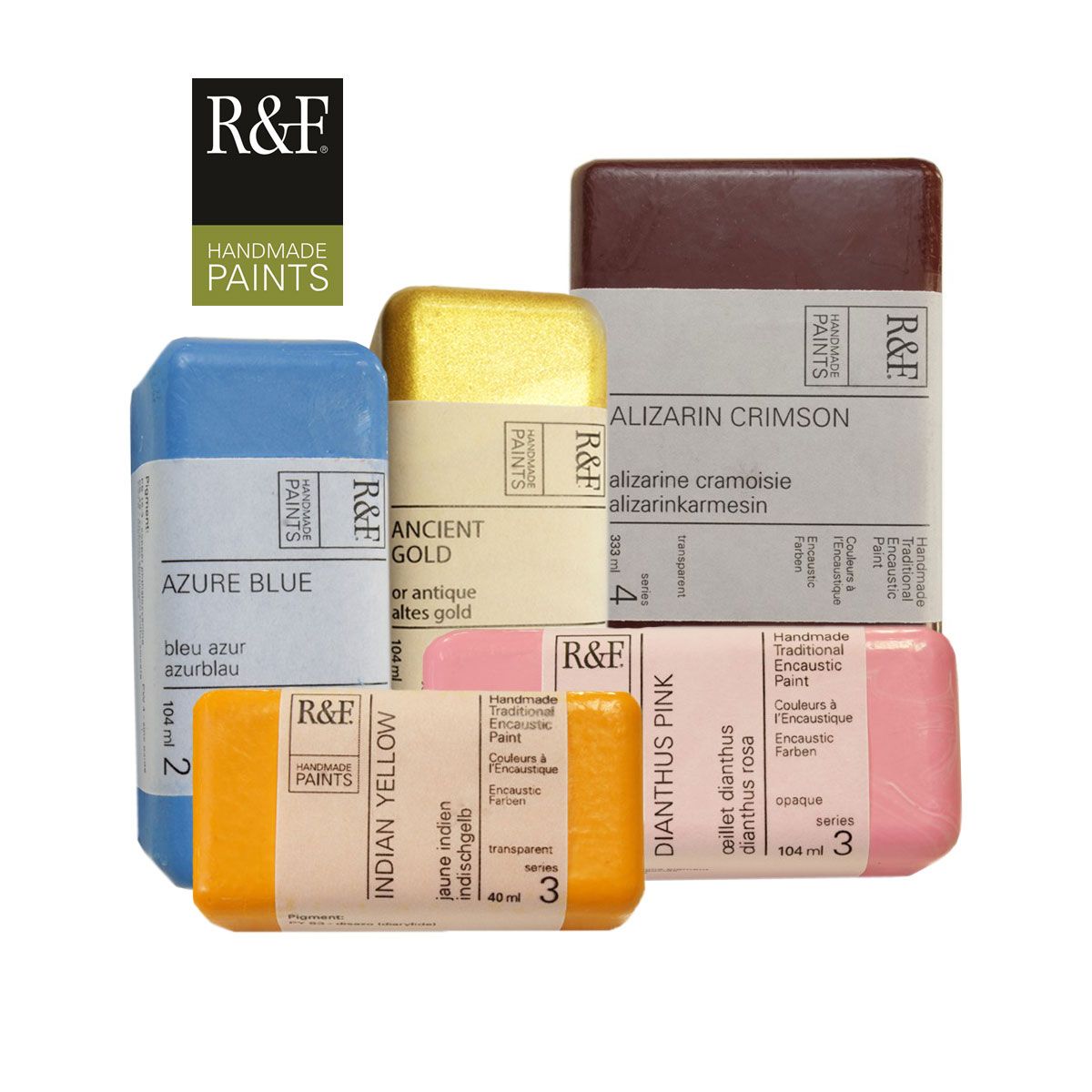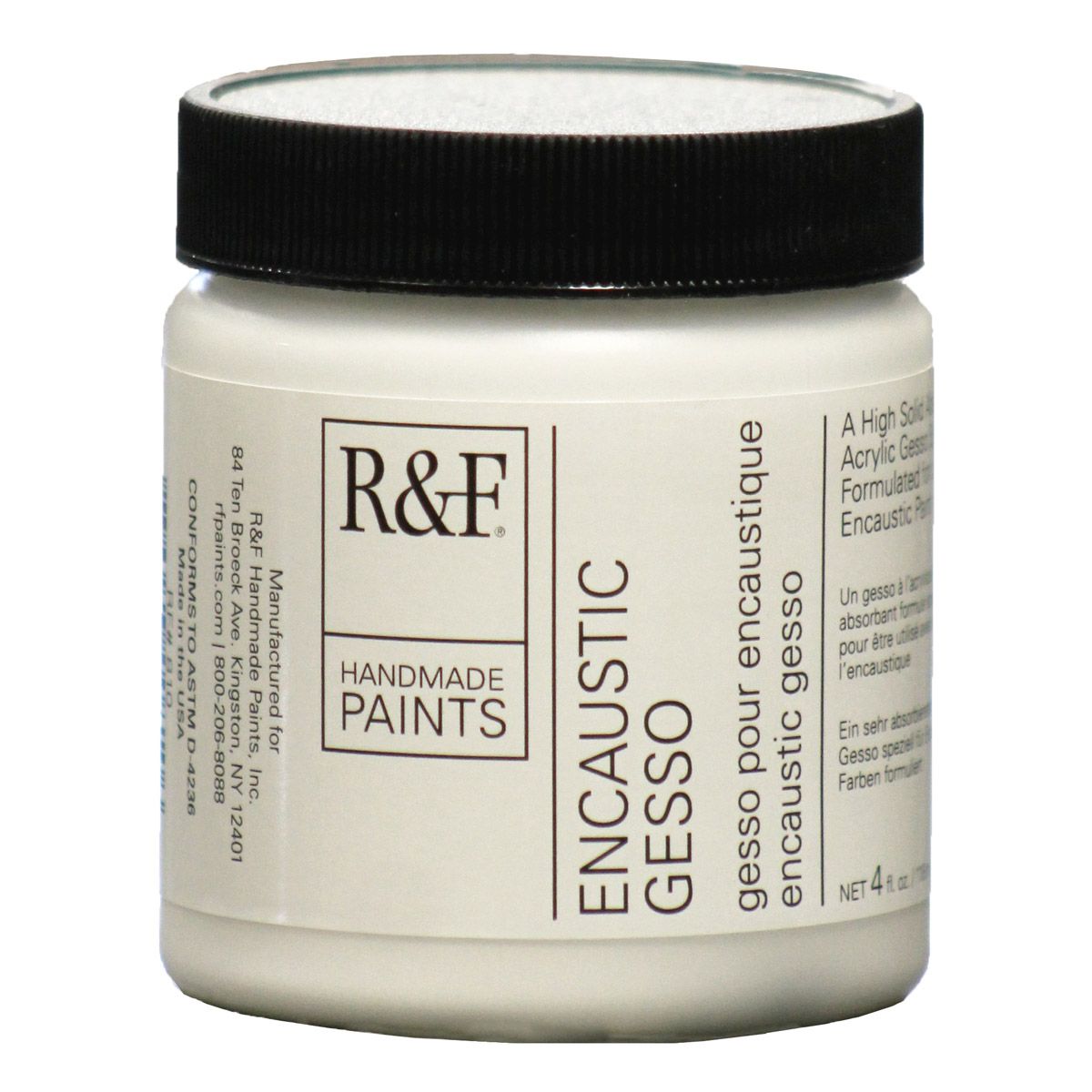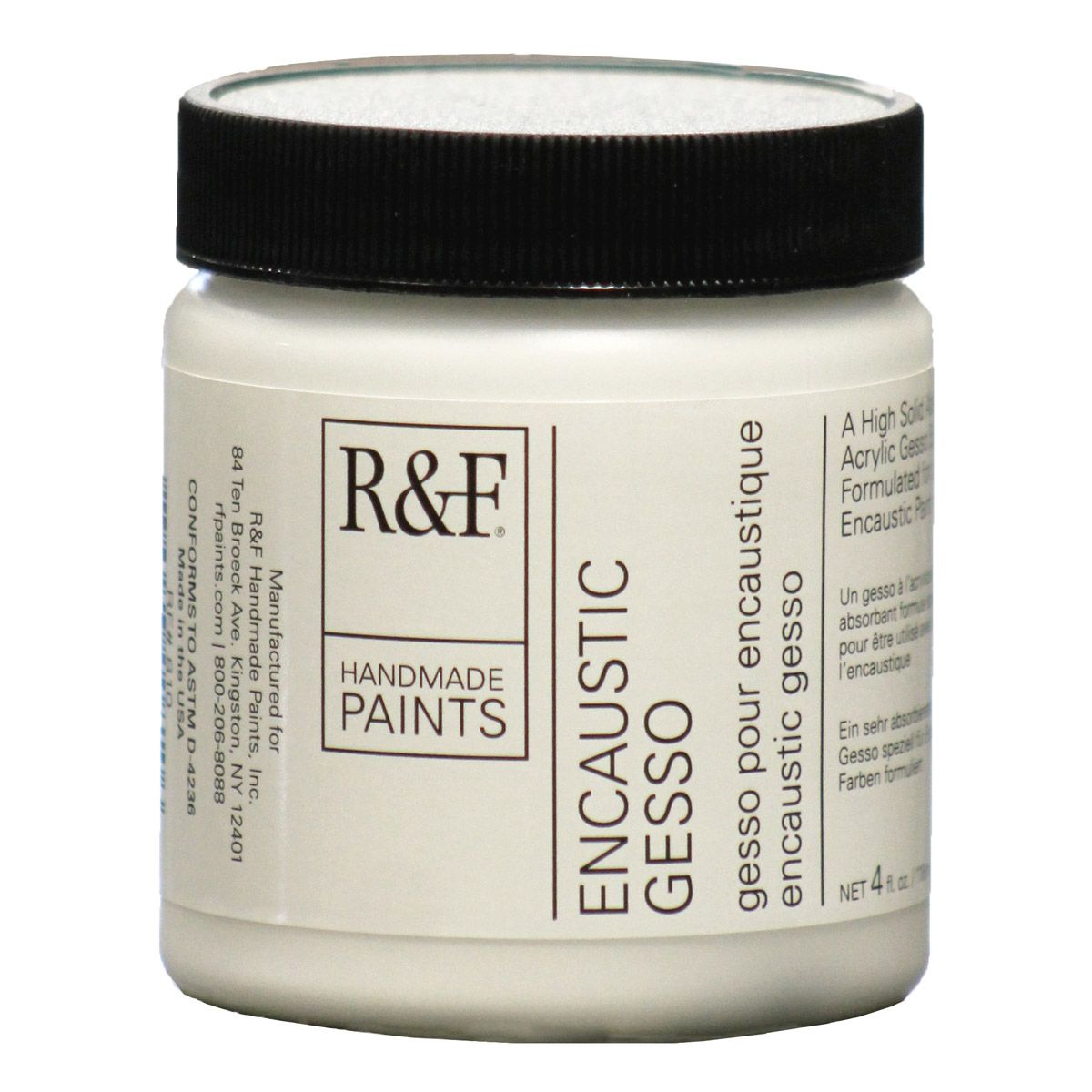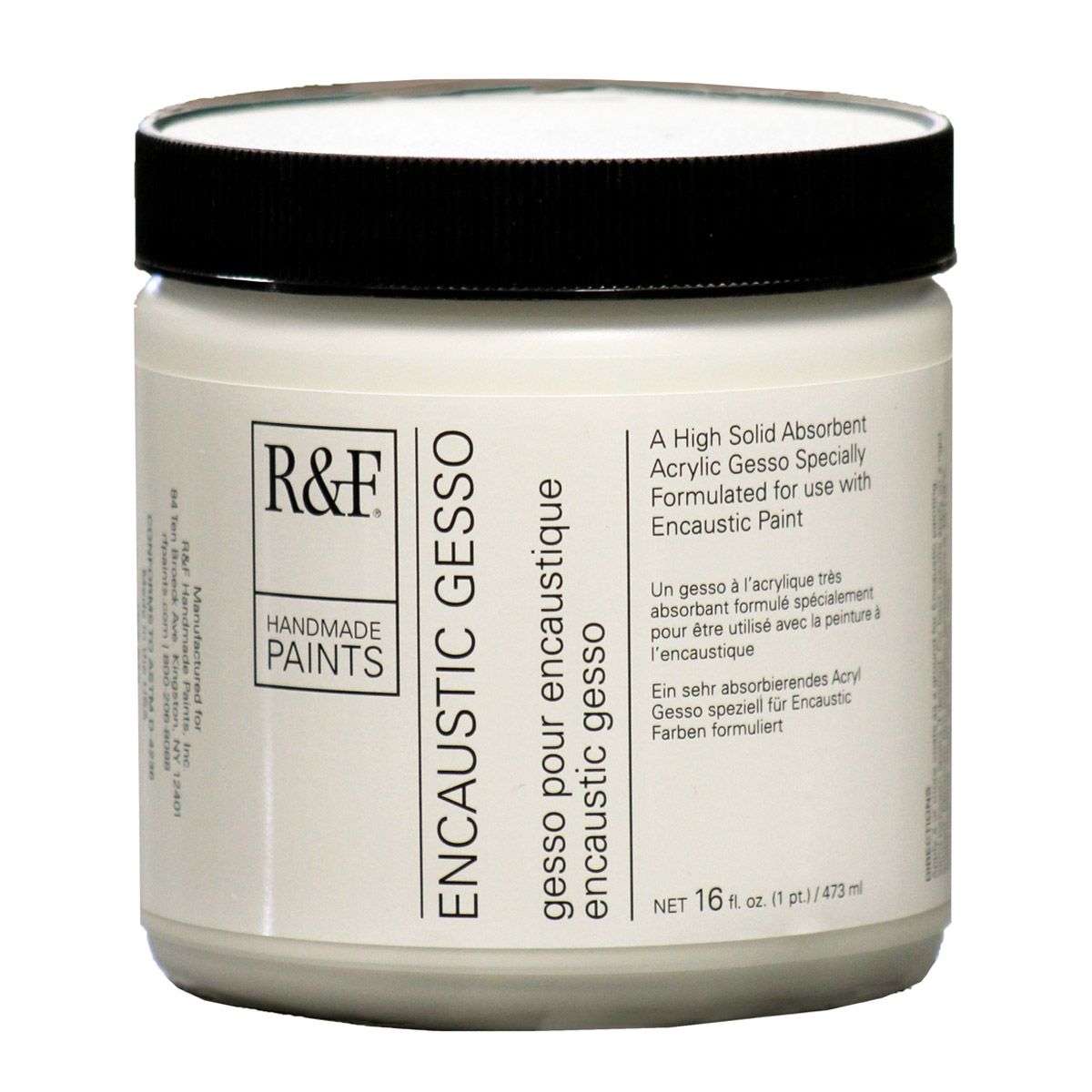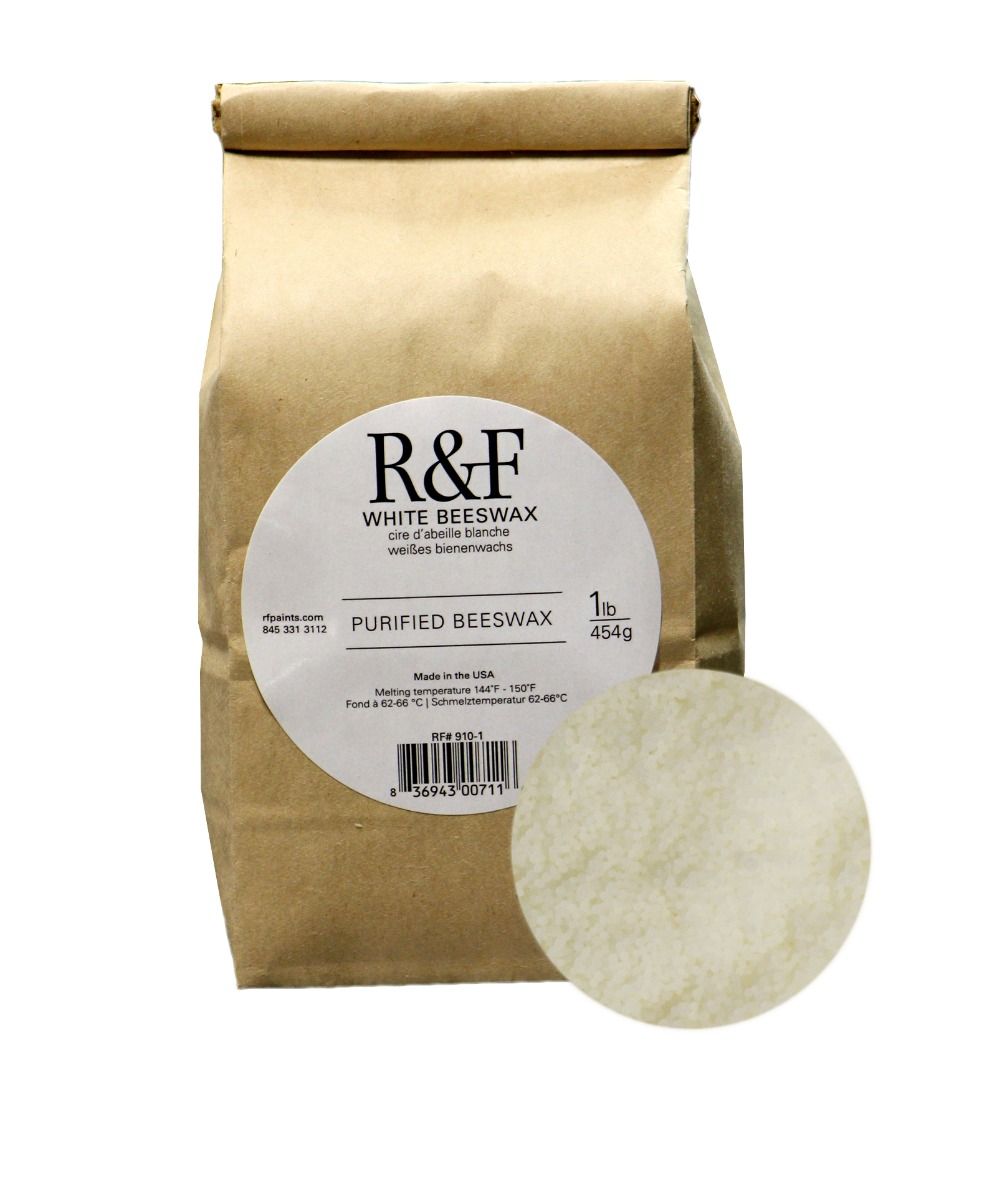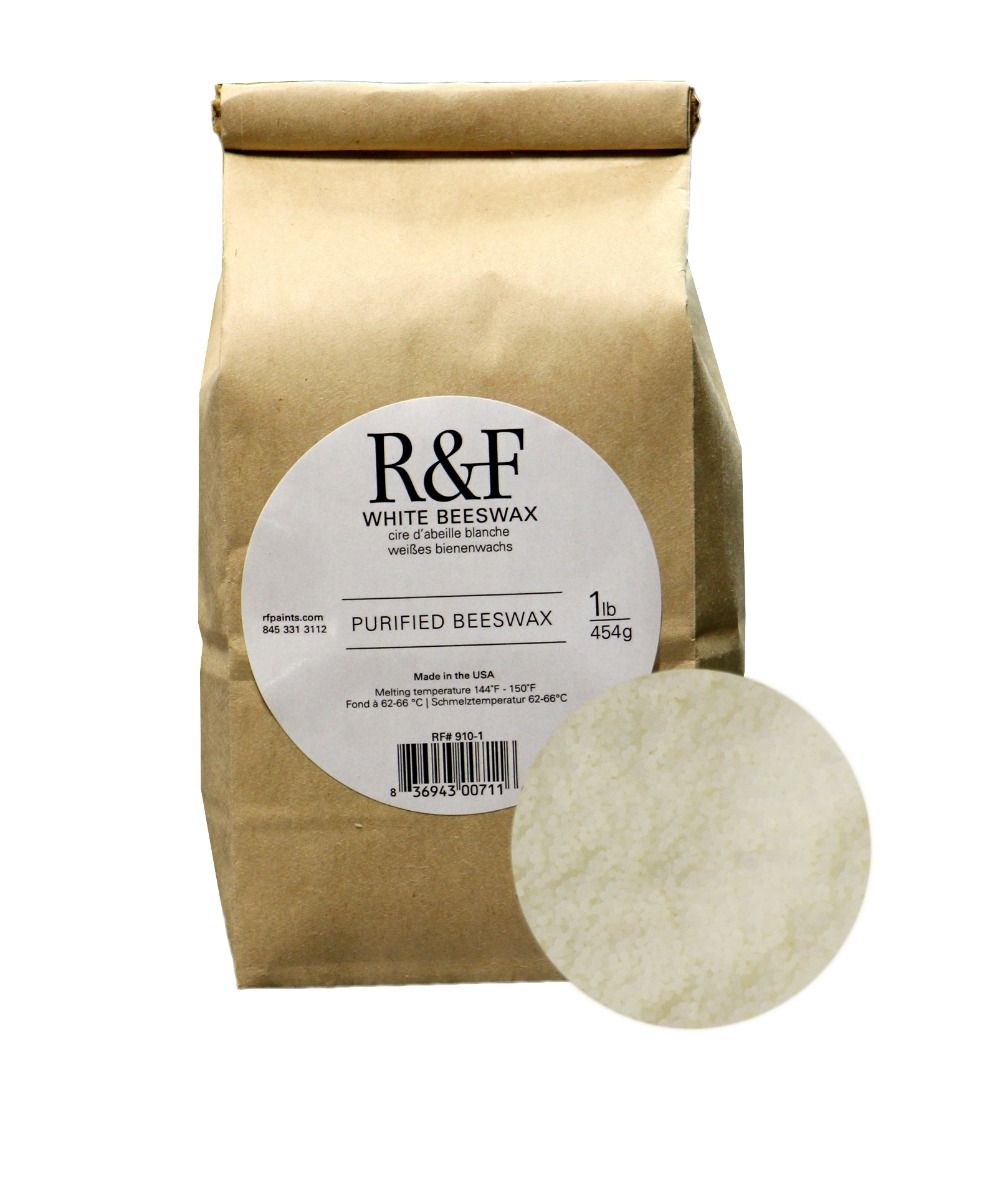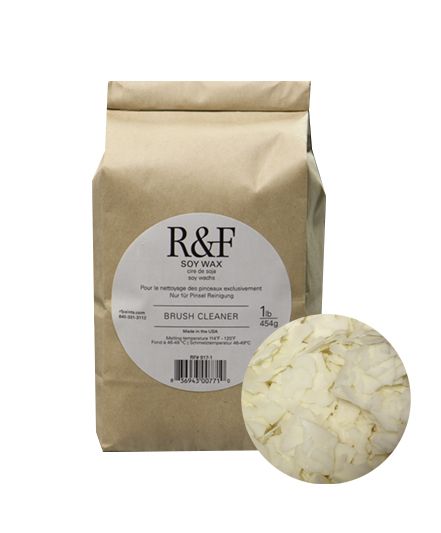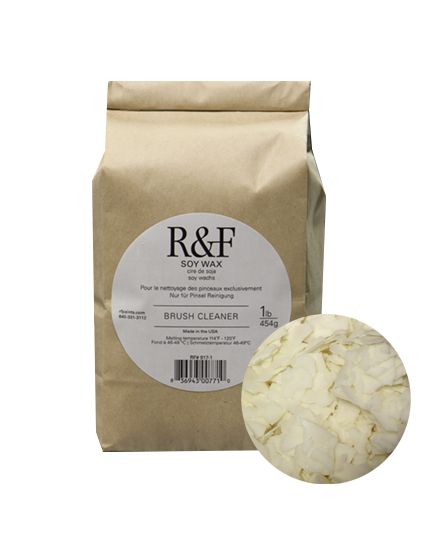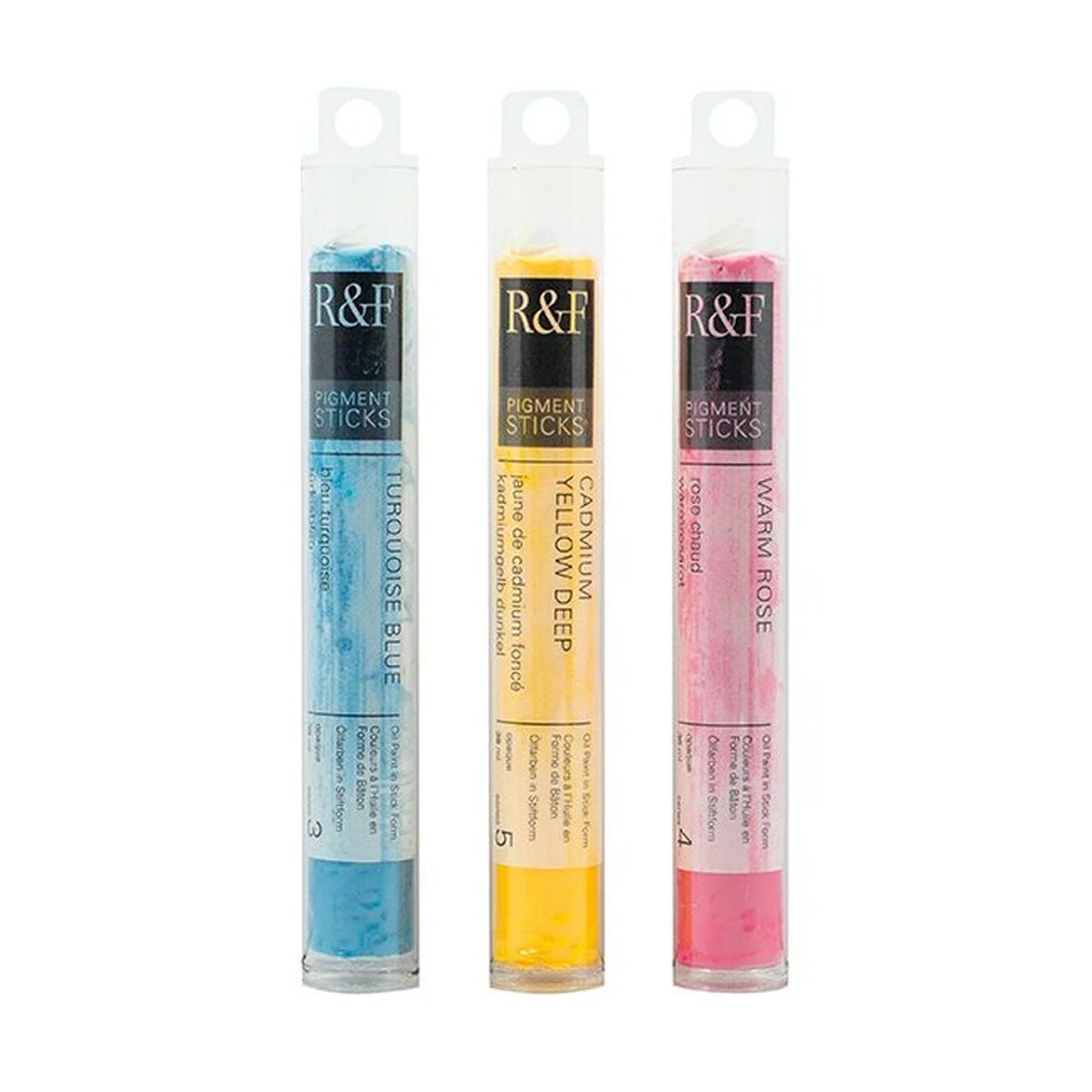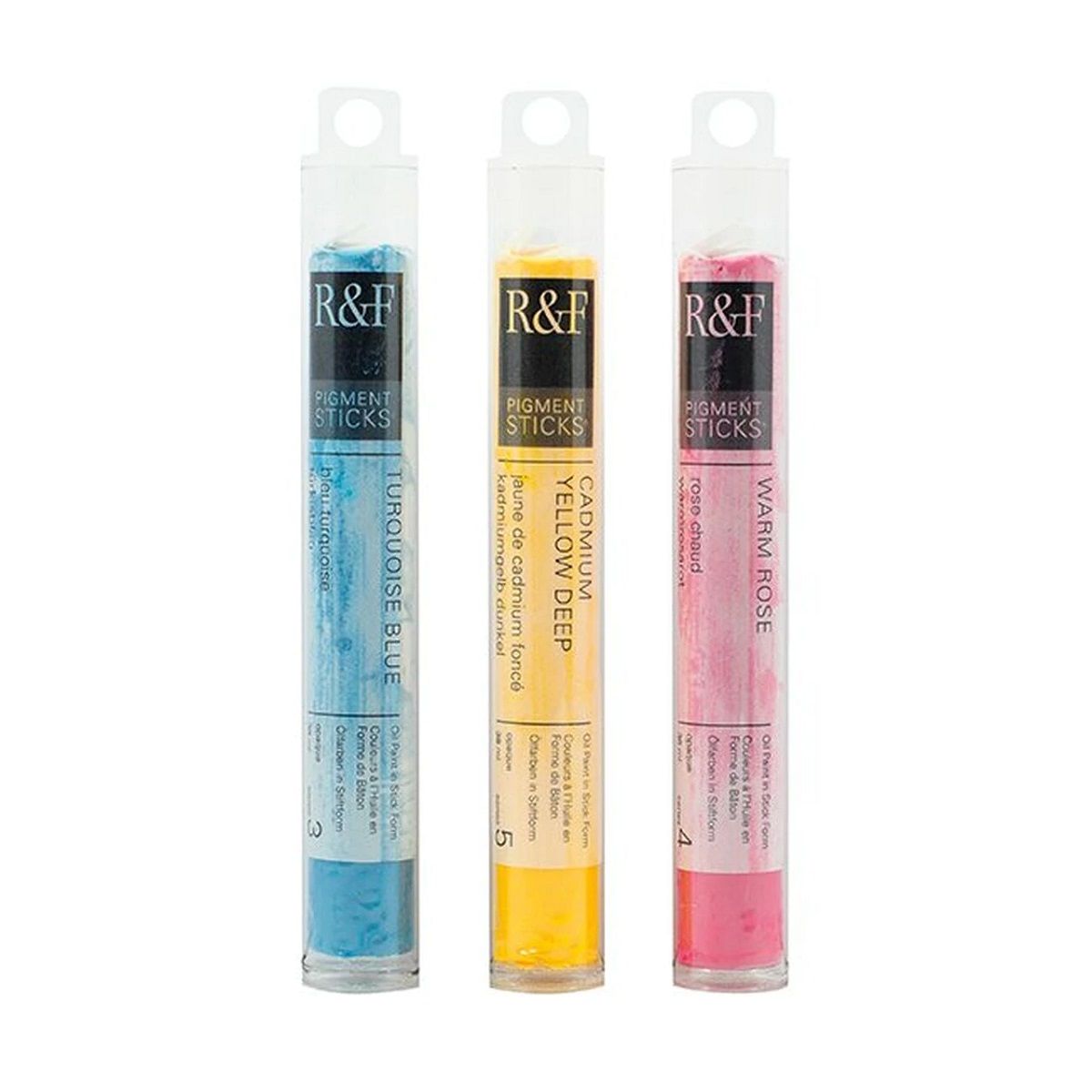R&F Oil Pigment Stick, Manganese Blue Hue 38ml
R&F Pigment Stick - Manganese Blue Hue, 40 ml
R&F’s take on Manganese Blue. A beautiful glaze colour with an ice-blue undertone.
- Pigment Composition: PB35-Cerulean Blue; PB15:3-Phthalo Blue; PW7-Zinc Sulphide White
- Paint Lines: Encaustic, Pigment Stick
- Opacity: Transparent
- Pigment Stick Drying Rate: Slow
- Classification: Mixed
- Chemical Composition: Cerulean + Phthalo blue + Zinc Oxide
- Safety Information: Conforms to ASTM D-4236
Safety Warnings: This product contains cadmium, a chemical known to the State of California to cause cancer.
R&F Pigment Stick - Manganese Blue Hue, 40 ml
R&F’s take on Manganese Blue. A beautiful glaze colour with an ice-blue undertone.
- Pigment Composition: PB35-Cerulean Blue; PB15:3-Phthalo Blue; PW7-Zinc Sulphide White
- Paint Lines: Encaustic, Pigment Stick
- Opacity: Transparent
- Pigment Stick Drying Rate: Slow
- Classification: Mixed
- Chemical Composition: Cerulean + Phthalo blue + Zinc Oxide
- Safety Information: Conforms to ASTM D-4236
Safety Warnings: This product contains cadmium, a chemical known to the State of California to cause cancer.
Pigment Name PB35-Cerulean Blue
Classification: Inorganic
Chemical Composition: Cobalt (II) stannate
Properties
Cerulean Blue is the standard cool blue, considered the traditional counterpart to Ultramarine, and is often used for painting atmospheric shades. It is quick-drying and retains its colour well, better than any other blue, in oil paint form. However, it tends to granulate or become chalky in watercolours. It has limited hiding power, is semi-opaque, and is easy to control. Its tinting capacity is low, so it can become lost when mixing.
Permanence
Cerulean Blue has excellent permanence. It is very stable and lightfast.
Toxicity
Cerulean Blue is moderately toxic if inhaled or ingested and slightly toxic if it comes into contact with skin.
History
The name Cerulean Blue comes from the Latin word caelum, meaning sky. This pigment was discovered in 1805 by Andreas Hopfner. Still, it was not widely available until introduced by Messrs. G. Rowney Co. in England under the name coeruleum in 1860 for use in aquarelle and oil painting. It was produced by the action of heat on cobalt oxide and other metallic bases.
Pigment Name: PB15:3-Phthalo Blue
Classification: Organic
Chemical Composition: Beta copper phthalocyanine
Properties
Phthalo Blue PB15:3 is a structural variant of Phthalo Blue PB15 that produces more greenish tones.
Permanence
Phthalo Blues are completely lightfast, stable, and permanent for all paint uses. Due to their stability, they are currently used in inks, coatings, and many plastics and are considered a standard pigment in printing ink and the packaging industry.
Toxicity
Phthalo Blues have no significant hazards, although those made before 1982 contained some PCBs (polychlorinated biphenyls).
History
Developed by chemists using the trade name Monastral Blue, the organic blue dyestuff, now known as Phthalo Blue, was presented as a pigment in November 1935 in London. Its discovery was accidental. The dark colour was observed in a kettle where a dye was made from a British dyestuff plant. The demand for such a pigment came from commercial printers who wanted cyan to replace Prussian Blue.
Pigment Name: PW7-Zinc Sulphide White
Classification: Inorganic
Chemical Composition: Zinc sulphide
Properties
Zinc Sulphide White is a semi-transparent yellowish-white pigment. Zinc sulphide and zinc oxide (PW4) are often combined to create a more natural white colour. Transparency increases as particle size decrease. When slight impurities are added, zinc sulphide has phosphorescent and electroluminescent properties. It is often used to manufacture fluorescent or glow-in-the-dark paints.
Permanence
Zinc Sulphide White has excellent permanence and lightfastness.
Toxicity
Zinc Sulphide is non-toxic, but ore deposits often contain lead. Traces of lead and other impurities may be present in pigment powders. Ingestion is not recommended.
History
Zinc sulphide, when combined with slight impurities, has phosphorescent properties. It is often used for invisible ink that glows with exposure to ultraviolet light. Zinc sulphide is used in the manufacture of fluorescent paints.
| Size | 38 ml |
|---|---|
| Brand | R&F Encaustic Handmade Paints |
| Country of Manufacture | United States |
| Type of Store Credit value | Select |
| Country of Origin | 836943005969 |










